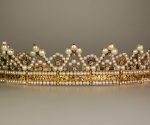Bloxels Merges Physical And Digital Play With Game Design
New Kickstarter project Bloxels is designed to help students build their own digital games, first on a physical game board, and then customize and play these games on tablets and computers. Bloxels looks to get students to learn through a combination of design, architecture, and art made possible through game design experimentation and creative learning.
Through the Bloxels physical non-electronic game board, the user creates physical obstacles with colored blocks that she then captures with a smartphone or tablet camera. The user then views their creation through the Bloxels Builder App, bringing the obstacle to life through animation and game customization. Once completed, the creator can share their game online for others to play, The Android Community reports. The Kickstarter project raised $ 68,000 through 764 backers.
The physical blocks are color-coded with each signifying a specific action or attribute; purple boxes are the ‘enemy’, blue boxes are ‘water,’ while orange ones explode and white ones are narrative. The various coding blocks and app functionalities let the user create the storyline through animation, movement, and other actions.
Because learners are both the creator and player of the game, they are able to understand at a hands-on level how design, engineering, art, writing, and storytelling all come together.
Bloxels’ combination of physical and digital video game design make it useful for education. As Robin Rath, CEO of Pixel Press, the developer of Bloxels, says, the game has a broad range of applications in education. He added:
“A lot of the toys-to-life [market] is really treating the toy as a key to unlock content in the digital space, but we’re really using the toy as a creative medium to creating content within the video game space.”
Bloxels is aimed at children between 8 and 12 years old, but it has already been used in learning environments with 5-year-olds, GamesandLearning.org says.
As Bloxels says on its official app website, the user is challenged to think strategically away from a screen or monitor. The user must use their imagination and creativity to create a plot complete with an environment, characters, challenges, and goals. Once the design process is complete, the user is called upon to use their logic and design skills and experiment with different types of movement and animation to create an open-ended storytelling.
Unlike similar educational games, Bloxels says it manages to balance screen and off-screen time for students and promotes design thinking. Bloxels also supports children’s learning through meaningful rewards, and the young game designers can share their games with friends and see how many times others have played their game and liked it.
One of the defining characteristics of Bloxels is, according to its creators, that it blurs the line between learning and entertainment:
“[W]e’re focusing on play patterns that bridge the gap between learning at home and being motivated by fun experiences in the classroom.”
Bloxels offers educational resources for teachers with one and five-day lesson plans as well as special classroom packages for larger groups of learners. Matthew Farber, an Ed Tech Leadership doctoral candidate, said of Bloxels:
“Playing with Bloxels puts the concept of learning by making – formally known as constructionism – into practice. Bloxels encourages children to become creators of media content, instead of just consumers of it.”
The post Bloxels Merges Physical And Digital Play With Game Design appeared first on Education News.









Comments are closed.